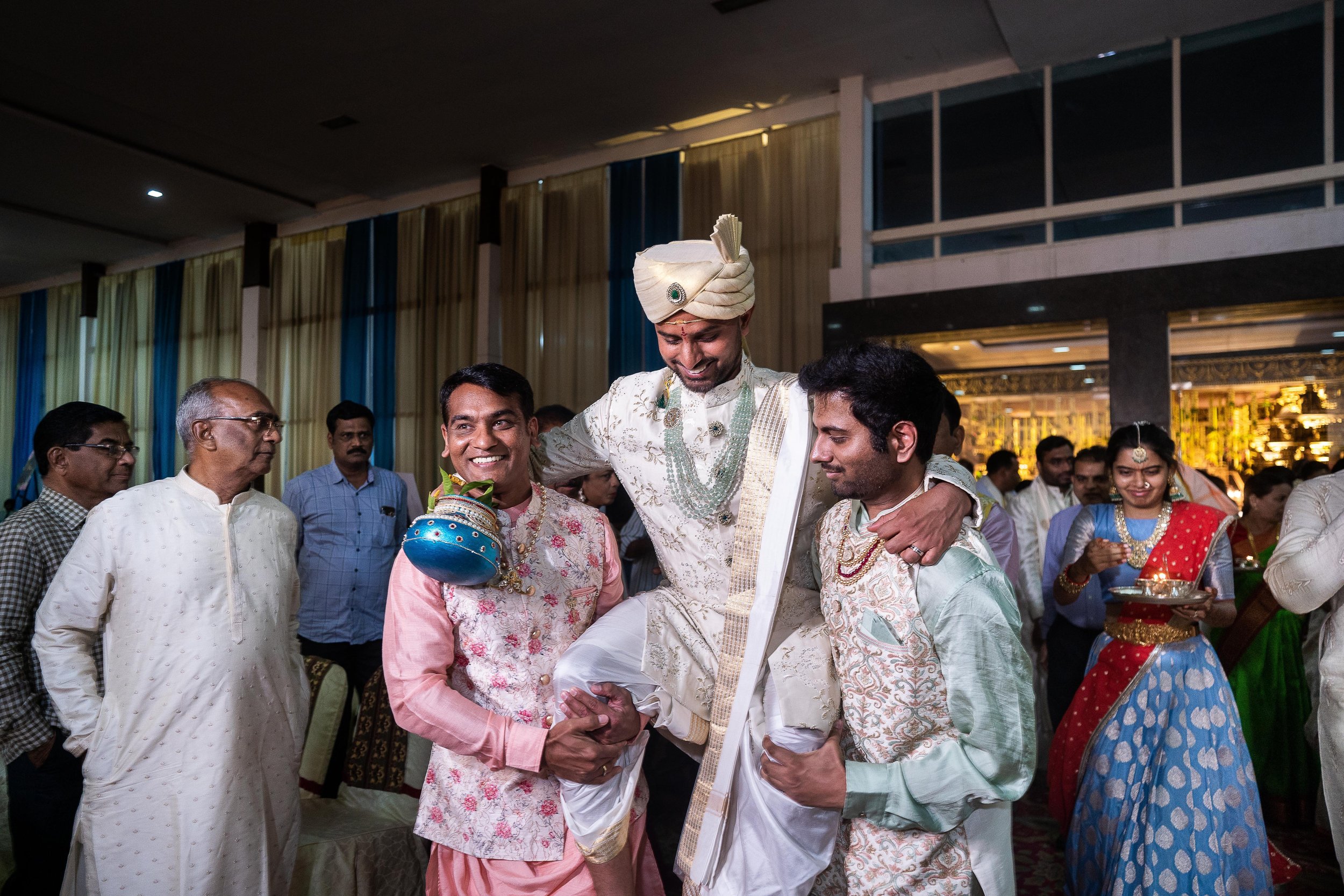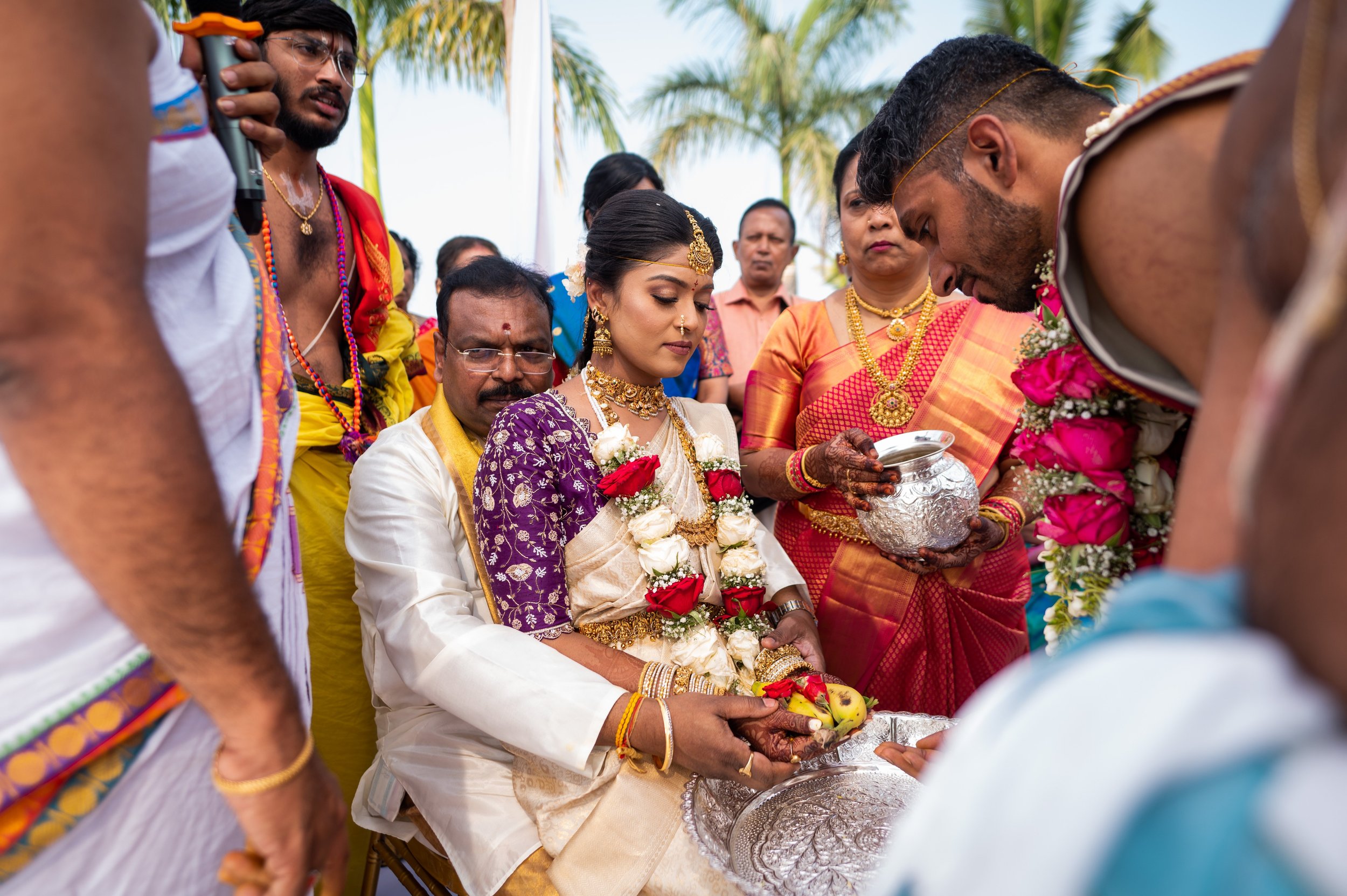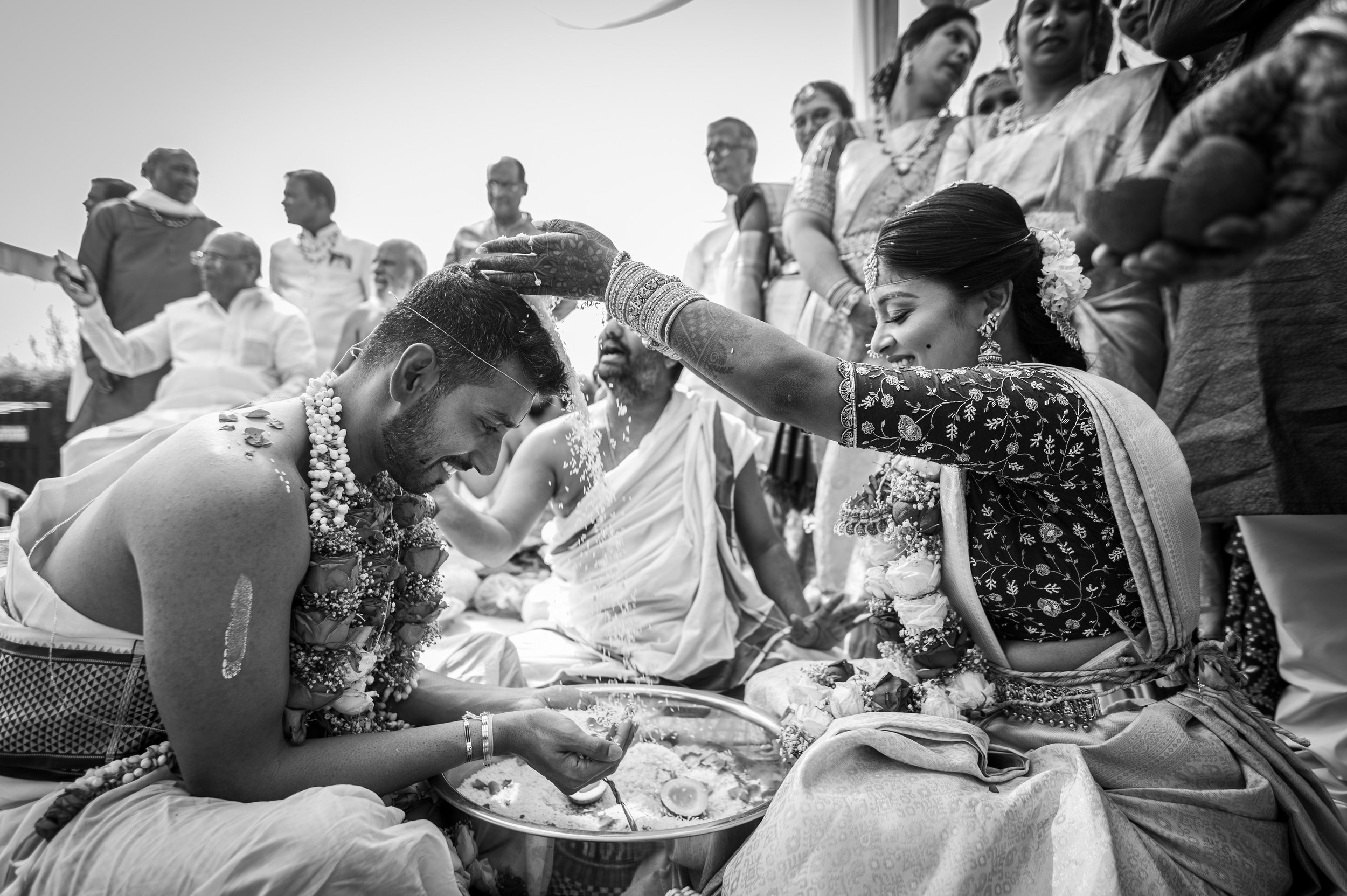South Indian Wedding Rituals: Traditions and Meaning
A South Indian wedding is a sacred blend of time-honored traditions, spirituality, and deep cultural significance. Unlike the grandeur of North Indian weddings, South Indian ceremonies focus on simplicity, divinity, and an unbreakable bond between two families. Every ritual, from the first formal discussions to the final wedding vows, is a testament to values that have been preserved for centuries.
For those unfamiliar with these customs, a South Indian wedding may seem like an elaborate series of rituals. But each one has a profound meaning, ensuring the couple embarks on their new journey with blessings, wisdom, and divine grace. Let’s walk through the essential South Indian wedding rituals and their significance.
Nischayathartham
Before the wedding, the families come together for the formal engagement, known as Nischayathartham, where they confirm the match and set the wedding date.
Exchange of Horoscopes: In many South Indian communities, horoscopes are matched before finalizing the alliance to ensure a harmonious union.
Formalizing the Bond: The families exchange gifts, and the bride is adorned with jewelry as a symbol of prosperity.
Temple Blessings: The ceremony often takes place in a temple, seeking divine approval for the union.
Panda Kaal Muhurtham
A day before the wedding, both families perform a ritual to seek the blessings of the gods for a smooth and auspicious ceremony.
Ancestral Worship: Prayers are offered to ancestors, invoking their goodwill.
Sacred Lamp Lighting: The family lights a lamp at the wedding venue, symbolizing positivity and removing obstacles.
An Act of Humility: This ritual reminds everyone that a wedding is not just about human efforts but also about divine intervention.
Kashi Yatra
A lighthearted yet deeply symbolic tradition, the Kashi Yatra represents a moment of choice for the groom.
Renouncing Worldly Life: The groom pretends to renounce marriage and start on a spiritual journey to Kashi (Varanasi).
Bride’s Father Intervenes: The bride’s father convinces him to embrace marriage, promising a life filled with love, companionship, and wisdom.
A Theatrical Tradition: While playful, this ritual signifies that marriage is a sacred duty, equally important as spiritual pursuits.
Mangala Snanam
On the wedding day, both the bride and groom undergo a purifying bath to cleanse their minds and souls before the sacred ceremony.
Turmeric & Herbal Oils: The couple is applied with turmeric and herbal oils, symbolizing prosperity and purification.
Holy Water: The bath is performed with water blessed by priests, signifying spiritual cleansing.
A Fresh Beginning: This marks their transition from their previous lives to a new journey together.
Gauri Puja
Before stepping into married life, the bride seeks the blessings of Goddess Gauri, known for her devotion and purity.
Offering to the Goddess: The bride prays for a marriage filled with harmony, love, and mutual respect.
A Mother’s Blessing: In many families, the bride’s mother plays a key role in this ritual, passing down wisdom and prayers.
Symbol of Strength: Gauri represents strength and grace, reminding the bride of her role in shaping a strong marital bond.
The Arrival of the Groom
The groom is welcomed with warmth and reverence as he arrives at the wedding venue, marking the beginning of the main ceremony.
Auspicious Entry: The bride’s family washes the groom’s feet, acknowledging him as the protector and provider of the new family.
Exchange of Garlands: The bride and groom exchange flower garlands, signifying acceptance and mutual respect.
A Moment of Playfulness: Sometimes, the families lift the bride and groom, turning the garland exchange into a fun competition.
Kanyadaanam
This is one of the most emotional and meaningful moments of the wedding, where the bride’s father gives her away to the groom.
A Sacred Promise: The father places the bride’s hand in the groom’s, entrusting him with her happiness and well-being.
Chanting of Vedic Mantras: Priests recite mantras to bless the union with wisdom, prosperity, and strength.
A Moment of Transformation: The bride transitions from being her parents’ daughter to a wife, ready to build a new life.
Mangalya Dharanam
This ritual marks the official union, where the groom ties the sacred mangalsutra around the bride’s neck.
Three Sacred Knots: The groom ties three knots, each representing commitment—one to the bride, one to her family, and one to God.
A Symbol of Marriage: The mangalsutra is the South Indian equivalent of a wedding ring, signifying lifelong togetherness.
Emotional & Sacred: This is often the most emotional part of the wedding, witnessed with prayers and blessings from all.
Saptapadi
The saptapadi or seven steps around the sacred fire seal the couple’s vows, committing them to a life of togetherness.
Seven Promises: Each step represents a vow—ranging from mutual respect to prosperity and family well-being.
Fire as a Witness: The sacred fire is considered divine, ensuring that the vows are spiritually binding.
An Eternal Bond: The completion of saptapadi signifies that the couple is now officially married.
Nalangu
After the wedding, the bride and groom participate in fun games, symbolizing the joy and companionship in their new life.
Breaking the Ice: The couple plays traditional games like rolling coconuts or finding rings in a pot of water.
Building Comfort: This ritual helps them ease into their new roles while engaging with each other in a lighthearted manner.
A Celebration of Love: Family members cheer and participate, making it a joyful conclusion to the wedding.
Griha Pravesh
As the bride enters her husband’s home, she is welcomed with rituals that symbolize prosperity, harmony, and a new beginning.
Welcoming Aarti: The groom’s mother performs an aarti to bless the bride.
Stepping Over Rice: The bride gently kicks a pot of rice, signifying abundance and fertility.
Unity in a New Household: The family showers blessings, marking the start of a new journey together.
A Sacred Union Rooted in Tradition
A South Indian wedding is more than just a celebration—it is a deeply spiritual and cultural experience that brings two souls and their families together in an unbreakable bond. Every ritual, from the first prayer to the final farewell, carries a meaning that extends beyond the wedding day.
As the bride steps into her new life, she brings with her the values of her ancestors, the warmth of her family, and the blessings of the divine. A South Indian wedding is not just about the union of two individuals; it is the creation of a shared destiny, woven with love, trust, and the sacred power of tradition.










